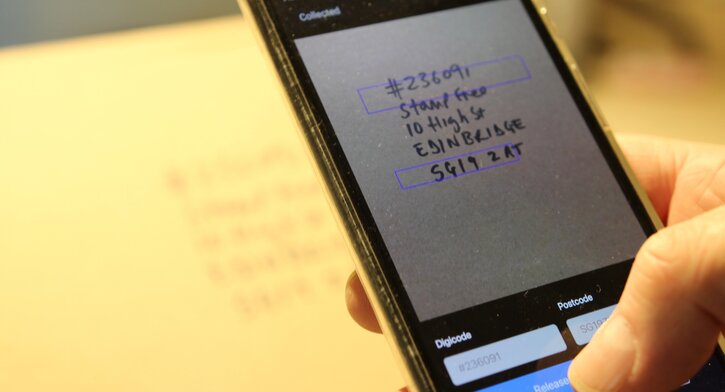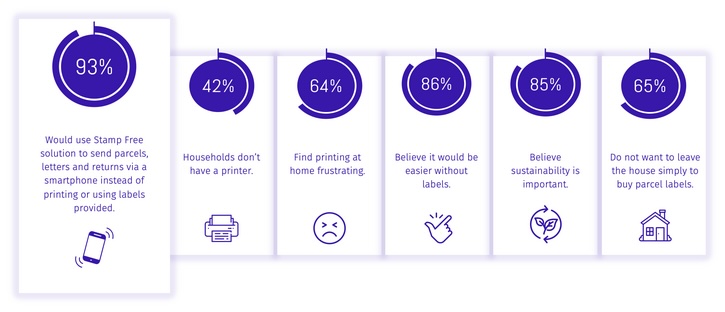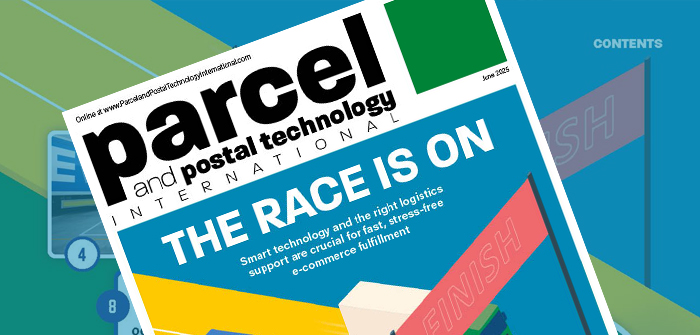Hugh Craigie Halkett, CEO and founder of Stamp Free, explains how the company’s AI solution is transforming the way parcels are sent around the world
How was Stamp Free started and how has it grown?
The idea for it came in around 2018 – I had a couple of letters to post but didn’t have any postage stamps, so I drove in the pouring rain to the nearest supermarket to buy some. I thought this was ridiculous – I’m driving all this way to buy some sticky labels to send some letters when I could send a WhatsApp or an email in a split second. It was a 19th century solution in a digital age. I thought that there must be something that could be done via a smartphone, and I came up with the idea for a handwritten code for a letter or parcel. But I wasn’t from the industry so it really was quite a leap of faith to move it forward.
I approached posts and carriers around the world to get validation that the idea made sense, and I got lots of good feedback. Then I went to a software development company where we created the first prototype. We raised our first lot of funding in 2021, so that is effectively when Stamp Free started trading.
What solutions do you offer to meet changing customer demands?
The company was founded on the idea of replacing stamps on letters, but very quickly we realized that parcels is where it’s at. So now we are an AI company that provides shipping solutions to posts, carriers and retailers to make life as easy as possible for their customers to send parcels and complete online returns. We’re focusing on first-mile customer convenience.
We have two products. First, our LabelFree product: the handwritten code is written on a parcel and AI validated via the camera function on the smartphone; then the customer ships the parcel with confidence to the post or carrier, who receives it and puts it through their network in the usual way, either by putting a barcoded label on the parcel or putting it through their scanning equipment and validating the Stamp Free code with our API technology.
The other product is our AppFree product for shipping parcels and returns. You don’t need to download a postal, carrier or retail app to ship the parcel, you just use the social media channel that you use every day on your phone, be it WhatsApp, TikTok, Facebook or a range of other channels.

What makes Stamp Free different from other shipping solutions?
Four-and-a-half years ago, when we first developed the label-free concept, we filed a patent application in the UK, which was granted a few months ago; we are patent pending across North America, the entirety of Europe and into Asia, so that provides us a degree of defensibility, which is useful. There aren’t any companies out there at the moment providing an AI-validated label-free solution. A number of posts and carriers have a digital stamp offering, but this is limited to letters and there is no AI validation of the code, so the letter is sent and then the postal carrier receives it and has to manually sort the letter as a consequence, which is very labor intensive and operationally expensive.
Customers like our label-free solution, so the concept is sound. We conducted independent market research across the UK last year and 93% of the 1,000 people asked said they loved the solution and want to use it. Posts and carriers are now focusing more on customer convenience, which is why they’re looking to adopt our technology in turn.
How does the solution help with sustainability?
When I initially came up with the concept, the idea was that the customer would write the code on the parcel and the carrier would put it through their network, scanning the code with their existing OCR machines that link to our technology via API calls, and the parcels were sent on their way to the recipient. In reality, 80% of our clients at the moment receive the parcel at the depot, scan the code, associate it with a barcode and print a label, and then process the item through their network.
That said, we now have carriers in the UK, Germany, Belgium and one country in Asia starting trials on end-to-end label-free delivery, and we’re about to start a trial in Mexico too, so there are a number of operators out there wanting end-to-end, sustainable, label-free shipping. We see this as a two-stage approach: first, the carrier puts on a label at the depot and then they test customer volumes coming through as a result of the Stamp Free label-free solution; if they get excited by it, they will move on to the end-to-end, label-free, sustainable implementation.

You’re working with Royal Mail and Kazakhstan Post. What can you tell us about those projects?
With Royal Mail, it is an online returns solution using WhatsApp – customers can use the messaging service to return their items without having to download another app. The parcel is then shipped by Royal Mail back to the retailer. We’ve completed integration and testing so it is about to go live with a number of retailers in the UK in the second half of this year.
At Kazakhstan Post, we’re providing a combination of our WhatsApp shipping solution – for outbounds only, not returns – as well as our label-free shipping solution. Customers can use WhatsApp to ship their parcels by writing the handwritten code on the parcel, scanning it and validating it with our AI solution, and then shipping the parcels with Kazakhstan Post.
Kazakhstan Post has done its own independent market research and 96% of its customers said they love the solution, which is great. We’re also helping the post by reducing its queue times by two-thirds, so from an operational efficiency perspective that is brilliant and from the customer perspective it is also good news. We’re rolling out the technology across the post’s 3,500 post offices in the second half of 2025; the Kazakhstan team are so enthusiastic about the solution, which is refreshing.
What other projects have you got planned?
From a European perspective, we’re starting trials in the UK, Germany and several other locations with some major global carriers. I mentioned the trial we have starting in Mexico, and in Brazil we have completed a trial with parcel locker provider ToShare, which is linked with parcel carrier TML and postal operator Correos. Brazil’s parcel volumes are set to double from 2023 to 2026, so e-commerce is going through a huge boom, which is very exciting for us.
We’re engaging with posts and carriers around the world, from Australia and New Zealand to Canada and everywhere in between. This is a global solution that is relevant to everyone who sends a parcel and owns a smartphone.
Meeting industry trends
Stamp Free has been publishing its Post and Parcel Trends Report for several years. The 2025 report reveals that the top five priorities for the 50 posts and carriers surveyed are:
- Customer satisfaction and convenience
- First- and last-mile infrastructure
- Digitalization and AI
- E-commerce and returns
- Sustainability
“If you’re looking from a Stamp Free perspective and how we fit into those priorities, clearly our solutions are very much about customer convenience. We’re focused on first-mile infrastructure; we are an AI company providing a digital solution for e-commerce and returns, and our label-free solution is all about sustainability,” Craigie Halkett confirms.
Download the Post and Parcel Trends Report at https://stampfree.ai/news/post-and-parcel-trends-report-2025/
This article was originally published in the June 2025 issue of Parcel and Postal Technology International


